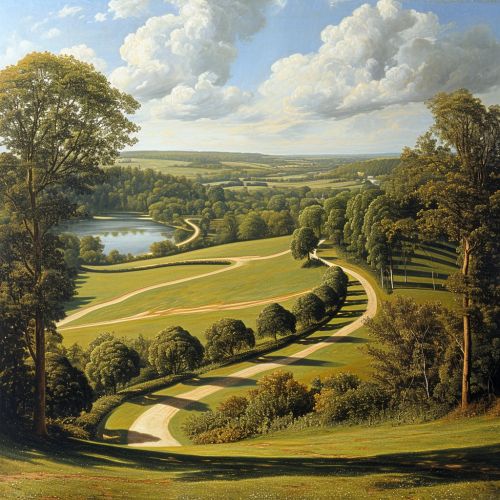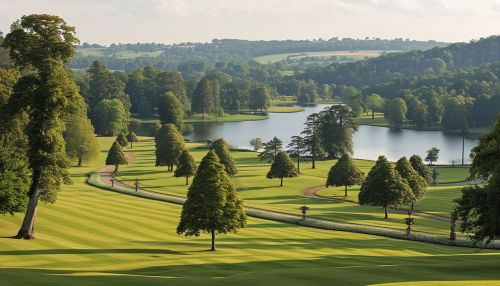Capability Brown
Early Life
Lancelot "Capability" Brown was born in 1716 in Kirkharle, Northumberland, England. The exact date of his birth is unknown, but it is believed to be in August. His parents, William Brown and Ursula Hall, were land agents and small-scale farmers. Brown was educated at a local school in Cambo until he was 16. He then began working as a gardener's boy for Sir William Loraine, the owner of Kirkharle Hall. This early exposure to the art of landscaping would greatly influence his future career.
Career
In 1739, Brown moved to Wotton, Buckinghamshire to work as a gardener for Sir Richard Grenville. After a few years, he was employed by Lord Cobham, who owned the nearby Stowe House, a property renowned for its magnificent gardens. At Stowe, Brown worked under William Kent, one of the founders of the new English style of landscape gardening. Kent's naturalistic style, which sought to create gardens that mimicked the beauty of the countryside, had a profound impact on Brown.
In 1751, Brown set up his own landscaping business. He quickly gained a reputation for his ability to create landscapes that looked natural, but were in fact carefully designed. This talent led to his nickname, "Capability", as he would tell his clients that their property had great "capability" for improvement.
Brown's style was characterized by undulating lawns, clumps of trees, serpentine lakes, and winding paths. He eschewed the formal, geometric designs of the French style that had previously dominated English landscaping. Instead, he aimed to create a seamless transition between the garden and the surrounding countryside. This approach was revolutionary at the time and has had a lasting impact on landscape design.
Brown's first major commission was at Petworth House in West Sussex. Over the next three decades, he worked on over 170 properties, including some of the most prestigious estates in England, such as Blenheim Palace, Chatsworth House, and Hampton Court Palace. His designs transformed the English landscape and earned him the title of "England's greatest gardener".


Legacy
Brown's influence on landscape design is immeasurable. His naturalistic style became the standard for English gardens and has influenced garden design worldwide. His work is still admired today, and many of his landscapes have been preserved and are open to the public.
Despite his success, Brown's work was not universally admired during his lifetime. Some critics felt that his designs were too simple and lacked the grandeur and complexity of the French style. However, these criticisms did not diminish his popularity, and he continued to receive commissions until his death.
Brown died in 1783 and was buried in the churchyard of St. Peter and St. Paul's Church in Fenstanton, Cambridgeshire, the only property he ever owned. His tombstone bears the simple inscription, "Here lies one who made the world smile".
